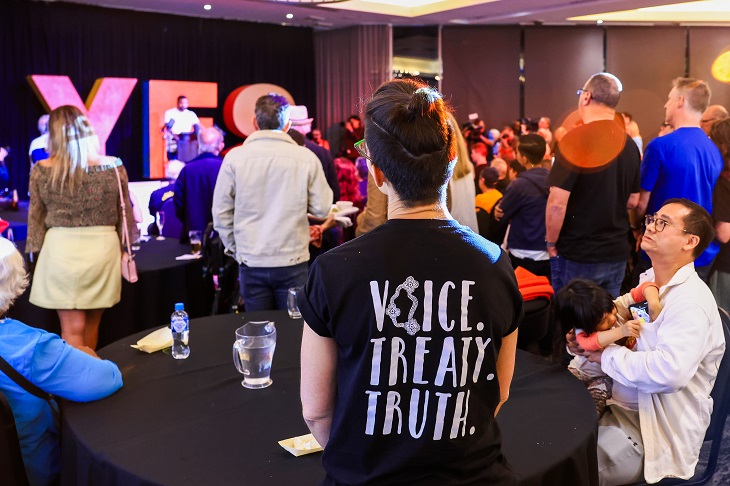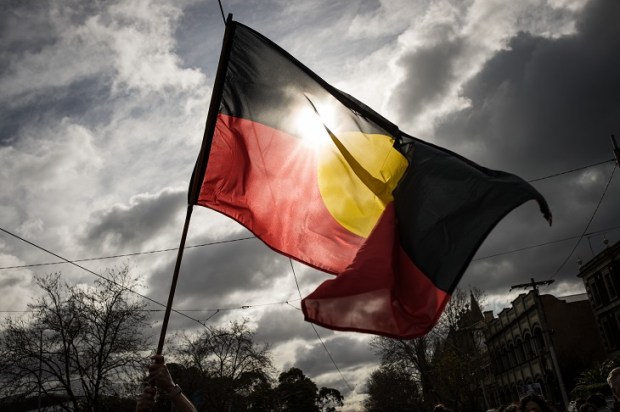The Voice referendum has failed. Badly. It did not secure a majority overall or in any state even though it seemed to have everything going in its favour.
The ‘Yes’ campaign attracted high-profile support. This includes 13 of the largest 20 companies in Australia, sports codes, faith groups, and a myriad of celebrities. This generated many millions of dollars in funding. The deck looked stacked in the ‘Yes’ campaign’s favour.
How could it all go so wrong?
The overarching problem is that the Voice was perceived as a bad policy and was sold badly. This was in stark contrast to the effective ‘No’ campaign, spearheaded by Jacinta Price and Warren Mundine, which largely avoided many of the policy failures outlined below.
We can identify several issues, all of which are intertwined with policy concerns. But, we will focus on five core problems with how the ‘Yes’ campaign was run.
The ‘Yes’ campaign could not get its story straight. Both ‘Yes’ and ‘No’ voters would acknowledge that the ‘Yes’ campaign’s messaging was sloppy. The mixed messages were unhelpful to the Voice.
Anthony Albanese claimed that the Voice was a modest request, a gracious gesture, and an outstretched hand. However, Megan Davis and George Williams noted that it is a structural reform and a redistribution of power. To voters, these look contradictory. Which is it?
Anthony Albanese claimed that the Voice is not about Treaty. Linda Burney is recorded as indicating that Voice leads to Treaty. Megan Davis and George Williams say that a Treaty is vulnerable without the Voice. The Uluru Statement says that Makarrata is the culmination of our agenda and follows from Voice. Do you believe Anthony Albanese and the claims that Treaty is irrelevant? Or, do you believe the other ‘Yes’ campaigners and Linda Burney who say it is the next step and Voice would enable it?
The message discipline was lacking.
The problem with this is that voters stop trusting the ‘Yes’ campaign. When the ‘Yes’ campaign appears to shift between diametrically opposed positions people lose trust and goodwill. People feel as if they are being misled. It also makes it difficult to run the line, ‘If you don’t know, find out!’ when people try to find out, they become more confused.
Hectoring, Arrogance, and Superciliousness.
If you want to convince people, you must explain your position to them and explain why you think their existing preconception is wrong. The emphasis is on explanation, especially in a single-issue vote.
It is not good enough to simply ‘tell’ them that they are wrong. You must show them why and do so in a logical and compelling manner. Telling people to ‘trust the experts’ or that ‘the information is out there’ is not going to do the job.
The ‘Yes’ campaign appeared condescending. It appeared to embody the worst attributes of progressive identity politics: a seeming self-assured smugness that believed itself to be so self-evidently righteous that it was beyond question. This is evident from claims that the ‘No’ campaign was Trumpian or riddled with ‘misinformation’. But, simply asserting as such is compelling only to people who already believed it. The word ‘misinformation’ became so overused that it simply started to mean ‘opinion I disagree with’.
Anyone who raised questions could simply ‘Google it’ because the information was out there. People were told, ‘If you don’t know, find out!’ But, from where? Who knows? And if you looked for it, you would find inconsistent and contradictory arguments from ‘Yes’ campaigners. This makes the campaign look smug and arrogant.
This arrogance is best typified by Marcia Langton’s remark that the ‘No’ campaign – or at least parts of it – were racist or stupid. One might wonder if she believes anyone convinced by the ‘No’ campaign’s arguments is also racist and stupid. But, she did walk back her remarks and emphasize that she was not calling any individual as such. Noel Pearson said that Jacinta Price had descended into a redneck vortex. Megan Davis tweeted – then deleted – condemnation of the ABC for ‘platforming’ ‘No’ campaigners.
The corporations made matters worse. According to Resolve, only 29 per cent of Australians felt that corporations should get involved. Company directors used shareholder money to support a cause with no obvious corporate benefit. The most charitable interpretation is that they believed they had to support ‘Yes’ lest they be bullied by activists or the government. That itself is telling. But, whatever the case is, corporations entering politics made people feel as if they were being lectured to by corporate overlords. It also made people feel muzzled: it would be a career-limiting move to go against your corporation.
All this means that there was no serious attempt to answer concerns. Several commentators – ourselves included – expressed concerns about how powerful the Voice would be. Not once did we see a rebuttal. Nicholas Aroney wrote extended working papers on the Voice and its legal powers. There was never a detailed counter-analysis. Or, if there was, it was not obvious. Some might say people did not look hard enough. To which one might respond that the ‘Yes’ campaign should not campaign in riddles and bury information.
Misinformation.
The ‘Yes’ campaign was plagued by misinformation. The ‘Yes’ campaign seems to complain that misinformation is why the Voice failed. They are correct, but, not in the way they seem to think. The ‘No’ campaign certainly did have some confusion. But the ‘Yes’ campaign’s own misinformation – and being found out for it – was catastrophic.
The ‘Yes’ campaign claims that the Voice is advisory and that it is misinformation to say that it would be powerful. That is grossly misleading. The Voice would have real power because it is the only constitutionally enshrined body that could make representations to the government and have consultation rights. Thus, it is the only body that government is bound to listen to and consult to this degree. It is akin to being especially bound to consider one side of a court case and not the other. This would cause government to disregard or undervalue countervailing opinions. In so doing, it enables the Voice to control the narrative. This is power because influence is power. This is in addition to Professor Aroney’s concern that the Voice could create ‘New Head of Commonwealth Legislative Power’.
The ‘Yes’ campaign claims that talk about Treaty is a misdirection. This is false. As we already indicated, Linda Burney is on Video linking Voice to Treaty. It is duplicitous for the ‘Yes’ camp to accuse people of spreading misinformation when they cite ‘Yes’ campaigners’ words back to them.
The ‘Yes’ campaign put out myriad talking points about how the Voice would be composed, including gender representation and assertions it would be elected. This was false because the government refused to reveal legislation; and thus, we had no idea how the Voice would be composed. Even if it did, the legislation could change over time. Thus, it would be misleading to claim that the Voice would definitely be comprised in a specific way.
The ‘Yes’ campaign kept claiming that 80 per cent of Indigenous Australians supported this. But, it was based on a small poll from long before the referendum date. Since then, public mood overall had shifted starkly negative. If the 80 per cent figure was ever accurate and certainly was not by the time of the referendum.
The ‘Yes’ campaign spread clearly incorrect information while accusing the ‘No’ campaign of doing the same. This became so obvious as to undermine the ‘Yes’ campaign’s credibility.
Vagueness and complacency.
People craved information about how the Voice would function. This was a recurring theme in all polls. The government seemingly thought that a small target approach would be better and did not want to run the risk of providing legislation to be critiqued.
The government rightly noted that legislation comes after the referendum. It can also change over time. But, this is only a surface-level answer. The government must dig deeper into what the request for details really means.
The bigger issue is that the amendment was badly framed. When people asked for details, it signified that people were concerned that the Voice could be far-reaching. They were concerned about whether, and to what extent, the Voice could litigate if it did not get its way. They were concerned about consultation rights. They were concerned about what other powers the Voice might have. They were concerned about funding.
The government could have partially addressed this by making the amendment text tighter. This cannot be done ex-post with legislation because parliament’s legislative authority is subject to the constitution. If the Constitution gives the Voice specific powers, then Parliament cannot simply remove them on a whim.
The government took a maximalist approach to the Voice. In so doing, it created a broad Voice body. The call for details captured concerns about that breadth.
The ‘identity politics’ trap.
The baseline issue is that so-called identity politics does not work in Australia. Convincing Australians to embed a race-based policy in the Constitution would always be difficult. By contrast, convincing Australians to eliminate racial discrimination would be relatively easy as evidenced by the 1967 referendum.
There is an argument that the Constitution still has ‘race-based’ provisions in it. Australians have not been given the opportunity to remove those in recent years. One wonders whether removing ‘race-based’ provisions would perform stronger than adding new ones.
People acknowledge that there have been policy failures in Indigenous affairs. They realise that an informed policy decision is better than an uninformed one. However, it appears people were unconvinced that a Voice body of up to 30 people would improve these outcomes. If the government wished to articulate this, they needed to provide more details about the specific way in which the Voice would improve outcomes not merely assert that it would.
People were not convinced by the argument that Indigenous Australians need a ‘voice’ when they are 4 per cent of the population but 5 per cent of federal MPs are Indigenous.
The policy was not clearly supported by all Indigenous Australians. There is debate about how many Indigenous Australians supported the Voice. The two leading ‘No’ campaigners were Indigenous. Further, some Indigenous Australians expressed concern that inner-city elites might pretend to talk for them. In so doing, the Voice could make things worse by creating the façade of listening to communities when indeed that would not occur. A compelling rebuttal was required.
The Voice therefore failed because it was bad policy that was marketed badly. The ‘Yes’ campaign had disproportionately higher resources and it still failed. They frittered away millions of dollars. Voice proponents could have avoided this by framing the amendment text better and explaining their case better.
Peter Swan AO is a professor and Mark Humphery-Jenner is an associate professor in the University of NSW Business School.
Got something to add? Join the discussion and comment below.
Get 10 issues for just $10
Subscribe to The Spectator Australia today for the next 10 magazine issues, plus full online access, for just $10.


























Comments
Don't miss out
Join the conversation with other Spectator Australia readers. Subscribe to leave a comment.
SUBSCRIBEAlready a subscriber? Log in